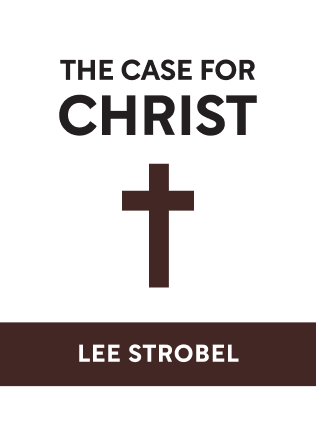

This article is an excerpt from the Shortform summary of "The Case for Christ" by Lee Strobel. Shortform has the world's best summaries of books you should be reading.
Like this article? Sign up for a free trial here .
What are the main inconsistencies in the Bible? What do these inconsistencies tell us about whether or not Jesus is real?
Many scholars point out that the inconsistencies in the Bible discredit the writings in the gospels and more. But in The Case for Christ, Lee Strobel argues that inconsistencies in the Bible appear for good reason, and can be explained with context.
Read more about inconsistencies in the Bible and why they matter.
Why Are There Inconsistencies in the Bible?
Naturally, there are some contradictions in the gospels regarding Jesus’s empty tomb—differences which skeptics have latched onto to call the entire Resurrection into question. But what do these inconsistencies in the Bible mean?
For example, in Matthew, Mary and Mary Magdalene arrive at the tomb at dawn and an angel opens the tomb for them; in Mark, the women arrive at sunrise and the tomb is already open; and in Luke, the women arrive at dawn to find the tomb already open. There also discrepancies in the Bible regarding who arrives at the tomb (Is it just Mary and Mary Magdalene, or are Salome and Joanna there, too?) and who’s in the tomb when they arrive (in Mark, a “youth” is inside; in Luke, it’s “two men”).
When one focuses on these minor inconsistencies in the Bible, however, one risks losing the forest for the trees. In other words, the gospels are remarkably consistent with regard to the major events of the Resurrection: Joseph of Arimathea’s handling of Jesus’s body and its entombment; the arrival of some group of women at the tomb Sunday morning; the tomb’s emptiness; and the vision of angels reporting that Jesus has risen. The core of the story is consistent across the gospels, and so it’s better scholarly practice to trust those consistencies rather than dismiss them. In fact, if the gospels aligned perfectly in all their details, they would (counterintuitively) be less trustworthy: One would suspect that the gospel writers had colluded to get their story straight.
The immateriality of the discrepancies in the Bible notwithstanding, there are in fact ways to harmonize the gospels’ accounts. For example, all the writers mention that Mary and Mary Magdalene arrived at the tomb with other women; some writers simply chose to mention some of the women by name whereas others didn’t.
Discrepancies in the Bible
There are certainly differences among the many ancient copies of the gospels (the highest estimates place the number of differences among the copies at 200,000). But these differences are by and large insignificant. For example, a great many differences occur because two Greek words are transposed (think “goes he” instead of “he goes”). But because Greek is an “inflected” language—that is, each word’s form indicates its part of speech—these kinds of “errors” have no effect on the text’s meaning. These inconsistencies in the Bible are not as important as some scholars claim.
And even more material variations—for example, the fact that the earliest manuscripts of 1 John feature no mention of the Trinity—don’t undermine the key doctrines of the Church. In the case of the Trinity, although the earliest versions of 1 John don’t mention it, other books (2 Corinthians, for instance) do.
Authorial Inconsistency
As noted above, there are obvious contradictions in the gospels. But, counter-intuitively, these inconsistencies actually constitute a sign of authenticity. Imagine if all four gospels were entirely consistent in their every feature—or, better yet, imagine if they were identical? Wouldn’t that seem suspicious, as though the authors conspired to get their stories straight?
In fact, the gospels are more believable because of their internal differences. Even legal scholars like Simon Greenleaf, a Harvard Law professor, have determined that the amount of inconsistency among the gospels is actually consistent with truthfulness.
And when it comes to specific Biblical contradictions in the gospels, there are usually perfectly reasonable explanations. To take one example, Mark and Luke write that Jesus sent the demons into the swine in a place called “Gerasa,” whereas Matthew says the place was “Gedara.” In fact, Gerasa was a transliteration of a particular town’s name, and Gedara was the province in which that town was located.
The Question of the First Witness
Another discrepancy between Paul’s creed and the gospel accounts concerns the person to whom Jesus first presented himself: in 1 Corinthians, it’s Peter; in John, it’s Mary Magdalene. Don’t these Biblical contradictions hurt Paul’s credibility?
They do not, because there may not even be a discrepancy. The creed actually never says that Jesus appeared first to Peter; rather, it says that Jesus appeared to a number of people and simply lists Peter first. That is to say, he might have appeared to Mary Magdalene first, but for contextual or cultural reasons—for example, the inadmissibility of women’s testimony in Jewish law—Paul decided to omit the specific female witnesses.
Descriptions of Pilate
Another question mark is Pontius Pilate’s true nature. The gospels portray Pilate as a conflicted authority who eventually yields to the pressure of his Jewish subjects, whereas most historical accounts depict him as tough and inflexible. Don’t these inconsistencies raise red flags?
According to Yamauchi, critics who harp on these Biblical contradictions don’t fully understand the historical context of time. Pilate’s benefactor in Rome, Sejanus, was removed from his position for plotting against the emperor in 31 AD, and so, even if he were temperamentally unyielding, Pilate would have been keenly aware of his weakened position. A fight with his Jewish subjects would have gotten him in even more trouble with the emperor, thus the New Testament accounts are probably accurate despite the discrepancies in the Bible.

———End of Preview———
Like what you just read? Read the rest of the world's best summary of Lee Strobel's "The Case for Christ" at Shortform .
Here's what you'll find in our full The Case for Christ summary :
- How an atheist lawyer-journalist researched Christ and began believing
- The key arguments against the existence of Christ, and why they don't hold up
- How to make up your own mind about whether Christ existed







Minor discrepancies in the Bible should not worry anyone. But what if some of the big stories are fictional? That would be worrisome. For instance, what if we found out that the detailed appearance stories in the last three Gospels are fictional? That would be a problem. What if the truth is that all of the original “sightings” of Jesus were nothing more than people seeing bright lights??